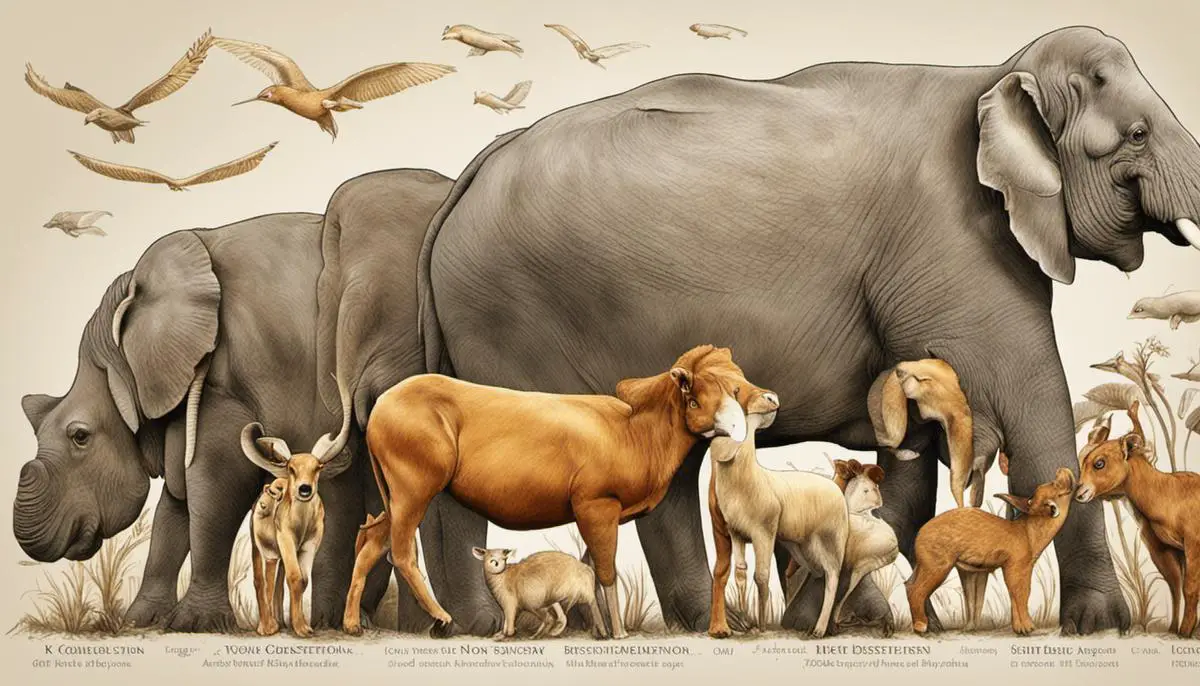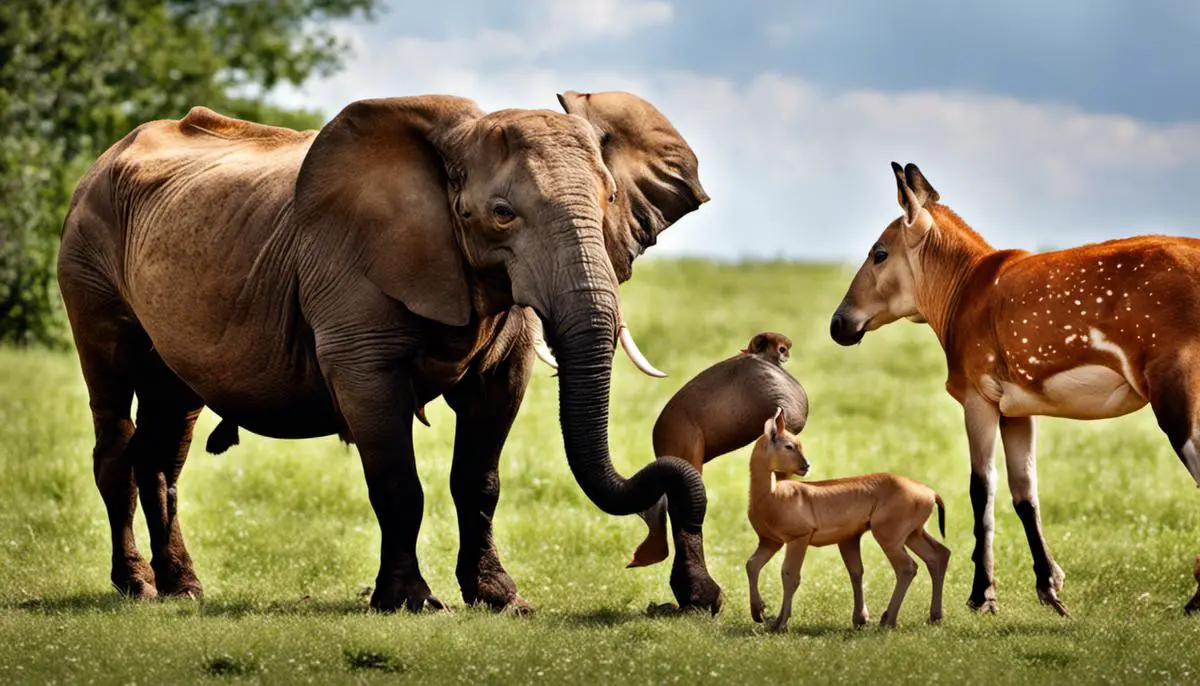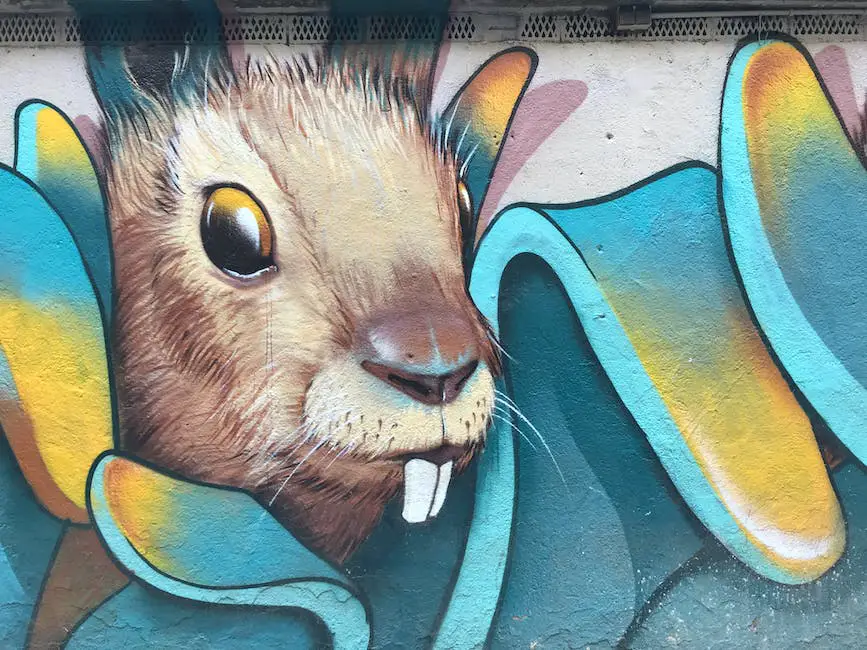Discovering the Animal with the Shortest Gestation Period
Gestation periods, the time encompassing pregnancy from conception to birth, are fundamental elements in understanding life across the animal kingdom. They are intriguing not only because of the remarkable differences amongst various species but also because of the implications they pose for offspring development and survival.
This discourse illuminates the concept of the gestation period, with a special emphasis on those animals that hold the record for the shortest pregnancies. The assortment spans from the intricacies behind the term ‘gestation period’ to a methodical ranking of animals based upon these periods.
Included in this investigation is a deep dive into the world of those mammals that have unusually short gestation periods and an elucidation of how these periods shape their existence.
Understanding Gestation Periods in Animals
Understanding Gestation Periods in Animals
The term ‘gestation period’ refers to the length of time between conception and birth in animals, specifically mammals. This period varies significantly among different species, reflecting the differing survival and developmental needs of diverse animal kingdoms. Oftentimes, the disparity in gestation periods is attributed to factors such as evolutionary adaptation, body size, metabolic rates, and environmental conditions.
Shortest Gestation Periods
Amongst the vast array of animal species, the marsupial known as the Virginian Opossum or North American Opossum (Didelphis virginiana) has reputedly the shortest gestation period. Following successful conception, the opossum gives birth merely after 12 to 13 days. This considerably short gestation period is due to the unique reproductive approach of marsupials; instead of nurturing the embryo fully within the womb, marsupials give birth to relatively undeveloped offspring, which then finish their development in the mother’s pouch.
Role of Evolution in Gestation Periods
Evolution has a significant role in determining the gestation length across different animal species. Animals with natural predators have evolved shorter gestation periods as a survival strategy. For instance, Rabbits (Oryctolagus cuniculus), possessing a gestation period of around 28 to 31 days, produce more offspring in a shorter time frame to counteract high predator-induced mortality rates.
Influence of Gestation Period Length on Offspring Development
The length of the gestation period profoundly affects the offspring’s state at birth. Offspring born after short gestation periods are typically altricial, meaning they are undeveloped and require comprehensive parental care. Conversely, offspring from species exhibiting longer gestation periods are often precocial; they are more developed and independent at birth, capable of standing, walking, and even feeding themselves shortly after.
Impact of Body Size and Metabolic Rates on Gestation Period
Body size and metabolic rate are strongly correlated with gestation length. Larger mammals, such as elephants possess longer gestation periods, lasting up to 22 months, to fulfill the extensive developmental needs of their larger-sized offspring. Conversely, smaller mammals tend to have shorter gestation periods. Likewise, species with higher metabolic rates generally employ shorter gestation, possibly due to the larger energy expenditure during pregnancy.
Correlation between Gestation Period and Survival Rate
The gestation period can impact the survival rate of the offspring. Species with short gestation periods often have higher infant mortality rates due to the offspring being less developed at birth. Conversely, species with long gestation periods produce more developed offspring with a higher chance of survival. However, longer gestation periods could also concentrate a substantial portion of a mother’s resources into fewer offspring, making them more vulnerable if an entire brood or litter is lost.
In conclusion, a variety of intrinsic and extrinsic factors result in vast differences in gestation periods within the animal kingdom. Holding the record for the shortest gestation period is the Virginian Opossum, however, this is not a universal norm. Variations in these periods are embedded in evolutionary adaptations, forming survival strategies, offspring development, and species continuity.

Ranking Animals Based on Gestation Period
The Duration of Gestation among Animals
The term ‘gestation period’ describes the time from conception to birth, a period during which an embryo or fetus cultivates and develops within its mother. This period’s duration can greatly differ among the numerous species of animals and some are known for having extraordinarily short gestation periods.
One such animal renowned for a particularly brief gestation period is the opossum, primarily found in North and South America. These marsupials, like kangaroos, carry their young ones in pouches. The Virginia opossum’s gestation period, for example, lasts an impressively short 12–13 days. After birth, the newborn opossum continues its development within the mother’s pouch for roughly two months until it’s fully grown.
A number of other animals also display quite short gestation periods. The hamster, popular as a domestic pet, has an approximately 15 to 20 day gestation period. Additionally, mice and rats are also known for brief gestation periods, typically around the 20-day mark.
Comparative Longer Gestation Periods
In stark contrast to the above, animals with exceptionally long gestation periods Elephants hold the record for having the longest gestation period amongst land mammals, with a period ranging from 18 to 22 months, depending on the species. Moreover, the Alpine black salamander, a rare amphibian species found in the European Alps, has a gestation period that can extend up to three years.
Sharks also demonstrate a spectrum of gestation periods, with the spiny dogfish shark possessing one of the longest known gestation periods in the animal kingdom, ranging from 22 to 24 months.
Impact of Gestation Periods on Development
Short gestation periods in animals often result in altricial offspring—those that are undeveloped and require extensive parental care post-birth. For example, opossum babies are born extremely underdeveloped, blind, and can barely move, which necessitates a lengthy postnatal development period in the safety of the mother’s pouch.
On the other hand, animals with long gestation periods typically give birth to precocial offspring—those that are born more developed and are relatively independent. For instance, an elephant calf can stand and walk within a few hours of being born, exhibiting a level of individual autonomy rarely seen in species with shorter gestation periods.
Understanding the Influences behind Gestation Length in Animals
The length of an animal’s gestation period is determined by various factors. One of the most prominent is body size; typically, larger species have longer gestation periods when compared to smaller ones. Interestingly, the complexity of an animal’s brain can also contribute to the gestation period, with species that have more intricate brains requiring extended periods of development. Ecological conditions, including the risk of predation and the accessibility of resources, can further influence the length of gestation.
Indeed, the wide array of gestation periods among animals is a captivating aspect of biodiversity. Be it the brief pregnancy of an opossum or the drawn-out gestation of an elephant, each serves as a testament to the adaptability and variety of life on our planet.

Focus on Animals with Shortest Pregnancies
Delves into Animal Gestation Periods
A gestation period refers to the time interval between fertilisation and the birth of an offspring. In mammals, this period exhibits considerable variations across different species, being influenced by factors such as size, environmental conditions, and evolutionary adaptations. Fascinatingly, certain animals experience incredibly short pregnancies, resulting in some truly intriguing reproductive phenomena.
The Virginian Opossum: Record-holder for Shortest Pregnancy
The Virginian Opossum, a marsupial native to North America, holds the record for the shortest gestation period. It typically has a pregnancy duration of only 12 to 13 days. The opossum’s quick reproductive cycle can be attributed to its evolutionary adaptations for survival in often harsh environments where food can be scarce and predation is intense. After birth, the newborns, born blind and hairless, crawl to the mother’s pouch, where they continue to develop and grow.
Marsupials and Rapid Gestation
Generally, marsupials like kangaroos, wombats, and koalas exhibit short gestation periods. Yet, the bandicoot, a small marsupial, has a significantly brief pregnancy lasting just 12.5 days on average. This rapid reproduction process ensures that the bandicoot can efficiently populate areas, providing an advantage over predators and enhancing survival rates. However, these neonates are highly underdeveloped and continue their maturation externally, mostly in the mother’s pouch.
Gestation in Rodents: The Case of the Mouse
Rodents have quick gestation spans. A typical house mouse, for example, features a pregnancy period of around 20 days. These short pregnancies enable rodents to reproduce quickly in response to favourable environmental conditions. However, the newborns, known as pups, are often helpless at birth and require extended parental care.
Bats: Extended Foetal Development Post-Birth
Despite a short gestation period of around 40 days, the common pipistrelle bat produces offspring that continue foetal development after birth. Newborn bats latch onto their mothers, feeding on mother’s milk for sustenance while continuing their development, an adaptation that seems to be prevalent amongst species with brief pregnancies.
Influences on Brief Gestation Periods
Various environmental factors, including the availability of food and threats from predators, seem to significantly impact brief gestation periods in species. During times when resources are minimal or predator populations are high, a prompt reproductive rate can serve as a survival advantage, ensuring a fair number of offspring reach adulthood.
It’s of notable interest, however, that short pregnancies do not yield fully mature offspring. These neonates often necessitate an extended period of parental care spent in a pouch, nest, or through lactation. Future studies might further investigate this engaging balance between the length of gestation, neonate development, parental involvement, and survival among these species.
Implications and Interesting Facts
Exploring the Brevity of Gestation Periods in the Animal Kingdom
Among the many fascinating aspects of nature, understanding the differing gestation periods across various species is indeed an intriguing study. The record for the shortest known gestation period is held by the Bandicoot, a small marsupial native to Australia, with a pregnancy that lasts an incredibly short span of merely 12 days. Following this brief period, they bring undeveloped offspring into the world, who continue their maturation attached to their mother’s body, nourished by her milk.
For the Bandicoot, having such a brief gestation cycle holds substantial implications for their survival as a species. Their capacity for swift reproduction enables them to preserve population numbers even in adverse environmental conditions where disease, predation, or a loss of habitat pose a threat. This speedy reproductive cycle ensures prompt generational turnaround, enhancing the Bandicoot’s adaptability to shifting climates and habitats.
Adaptation over Long-Term Evolutionary Periods
This reproductive strategy, termed r-selection, often correlates with smaller body sizes and shortened life spans typical of species inhabiting volatile environments. The quick gestation and development period are essentially survival strategies that evolved over millions of years. Short gestation periods are not limited to the Bandicoot; other species, such as rodents and rabbits also exhibit this trait to bolster their species’ survival.
The Fascinating Record of Gestation in the Animal Kingdom
Across the spectrum of the animal kingdom, gestation periods range from 12 days for the Bandicoot to 22 months in the case of the African Elephant. Remarkably, for marsupials like the Bandicoot or Kangaroo, the newborn’s developmental journey continues externally in the parent’s pouch—an evolutionary adaptation to ensure species continuity despite the short gestation.
Another fascinating fact concerns critters like the Asian black bear and the American black bear. They experience delayed implantation, which means that the fertilized egg doesn’t immediately attach to the uterus. This quirk in nature enables the synchronisation of the gestation period with environmental conditions, ensuring the cubs arrive at a more appropriate season.
Linking Gestation Periods and Species Survival
Short gestation periods are just one strategy in the epic evolutionary game of survival. However, they can have significant impacts on species’ population dynamics and survival probabilities. Particularly in the face of climate change and habitat destruction, rapid reproduction can increase a species’ resilience. As nature continues to amaze us with its diversity and adaptability, we are compelled to appreciate the intricate balance of life and the staggering survival strategies employed by creatures across the globe.

Unveiling this realm of animal reproduction, one that spans peculiarly quick gestation periods, has unveiled phenomenal facets of the animal world. Short gestation periods, a marvel of nature, empower certain creatures to adapt and survive in a rapidly changing world.
While the intricacies of these phenomena may seem overwhelming initially, closer scrutiny reveals an incredible aspect of biological adaptation and survival. This discourse not only enriches our knowledge about the curious world of animal reproduction but also reinforces the awe-inspiring diversity and adaptability embedded within the natural world.
